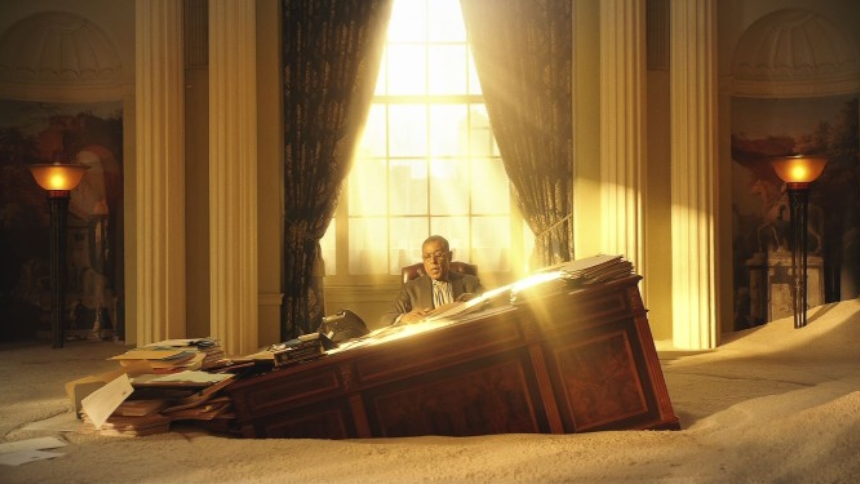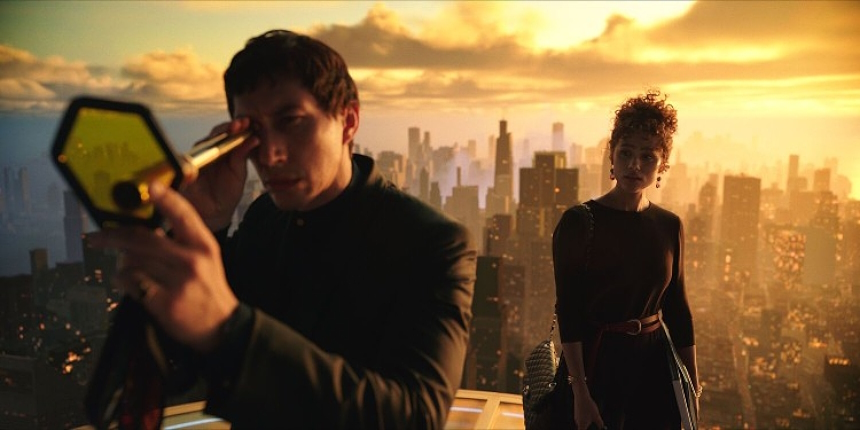MEGALOPOLIS Reviewed: Time Will Tell...

Megalopolis is everything at once, epic, parable, fairy tale, feature film, monument, homage, declaration of love, work of art. What the latter is exactly, no one knows, although it has something to do with time. The more time passes after the work that is a work of art, the clearer it becomes. Megalopolis is set in the not so distant future, which even more than today's America with its Capitol Hill and symmetrical domed buildings from the time of the Founders Fathers resembles Republican Rome. Rome + Locke + Montesquieu, for the form of government, and a multitude of writers and historical directors from Abel Gance and Griffith to Shakespeare and Mizoguchi for the cinematic form. Much for a feature film but not for Francis Ford Coppola, maker of films like Godfather I & II (1972, 1974), Apocalypse Now (1979), The Conversation (1974), Rumble Fish (1983) and dozens of other feature films made time stand still not only for the duration of the film but often long afterwards.
Precisely that remarkable gift has the central figure of Megalopolis, Cesar Catalina, played by Adam Driver: the gift of making time stand still. Here filmmaker Coppola and his creation Catalina merge. Time runs like a red line through history, through film and straight ahead and inevitably into the future. It is the ability of filmmaker Coppola par excellence to manipulate time. Movement is time, Zeno of Elea already knew when he told us the story of Achilles and the tortoise 2500 years ago. Also know Coppola who uses that same time to have his hero Cesar Catalina imagine a viable future for a crumbling and troubled imperial world.
That story also makes you think of Ayn Rand's novel The Fountainhead (1943). Her hero, the architect Howard Roark, also encounters resistance in realizing his visionary plans from small-minded fellow citizens. In the case of Megalopolis, the resistance comes mainly from mayor Cicero (Giancarlo Esposito). Catalina's struggle is about the earlier loss of his wife. His mistress, the exuberant Wow Platinum (Aubrey Plaza), eventually leaves him for the old rich banker Crassus (John Voigt). Shia LaBoeuf plays the villainous Clodio and there is plenty to be jealous of.
Everything comes together in the brilliant Catalina. In addition to his great wealth and his gift for wasting time, innovator Catalina has developed a new material with exceptional properties: Megalon. Cesar Catalina is a man larger than reality. The comparison with the historical Catalina from the last years of the Roman Republic, a demagogue and revolutionary, is interesting but not very helpfull. The historical Cicero was a declared opponent of Catalina. He rightly saw the Roman Republic threatened.
But Coppola does not attempt to make a political parable of the contemporary world or to create realism. This also applies to the visual resources used. Advanced CGI and visual effects, VFX are almost daily fare for the viewer of 2024. The film The Matrix (1999, Wachowski) was made a quarter of a century ago. Much more is possible in the meantime. The crux is not the effects. Where the film is called a fairy tale in the title role of the trailer, it is more a cross between opera and romantic spectacle including evil opponents who have it in for the tormented hero. It makes the film a kaleidoscopic comedy of visual plot lines. But these are subordinate to the many registers that Coppola opens as the ultimate architect of this film.
Coppola once wrote about his hope that arose with the advent of the camcorder that would make filming possible for everyone: "One day a little fat girl in Ohio will be the new Mozart and make a beautiful film with her father's little camcorder and for once the whole 'professionalism' of film will be destroyed forever and it will become an art form." Coppola was undoubtedly also referring to himself as a young filmmaker. The question is not how Coppola wants to relate to the art of film with his film, but rather what measure or immoderation his film has as an art form. It is often the case that the more time passes after the appearance of a film, book or oeuvre, the clearer it becomes where the values of such a work or oeuvre lie. Megalopolis seems to become an example of such a work that will be alternately reviled and praised over time. So let, more or less in sync with the movie, time be its judge.







